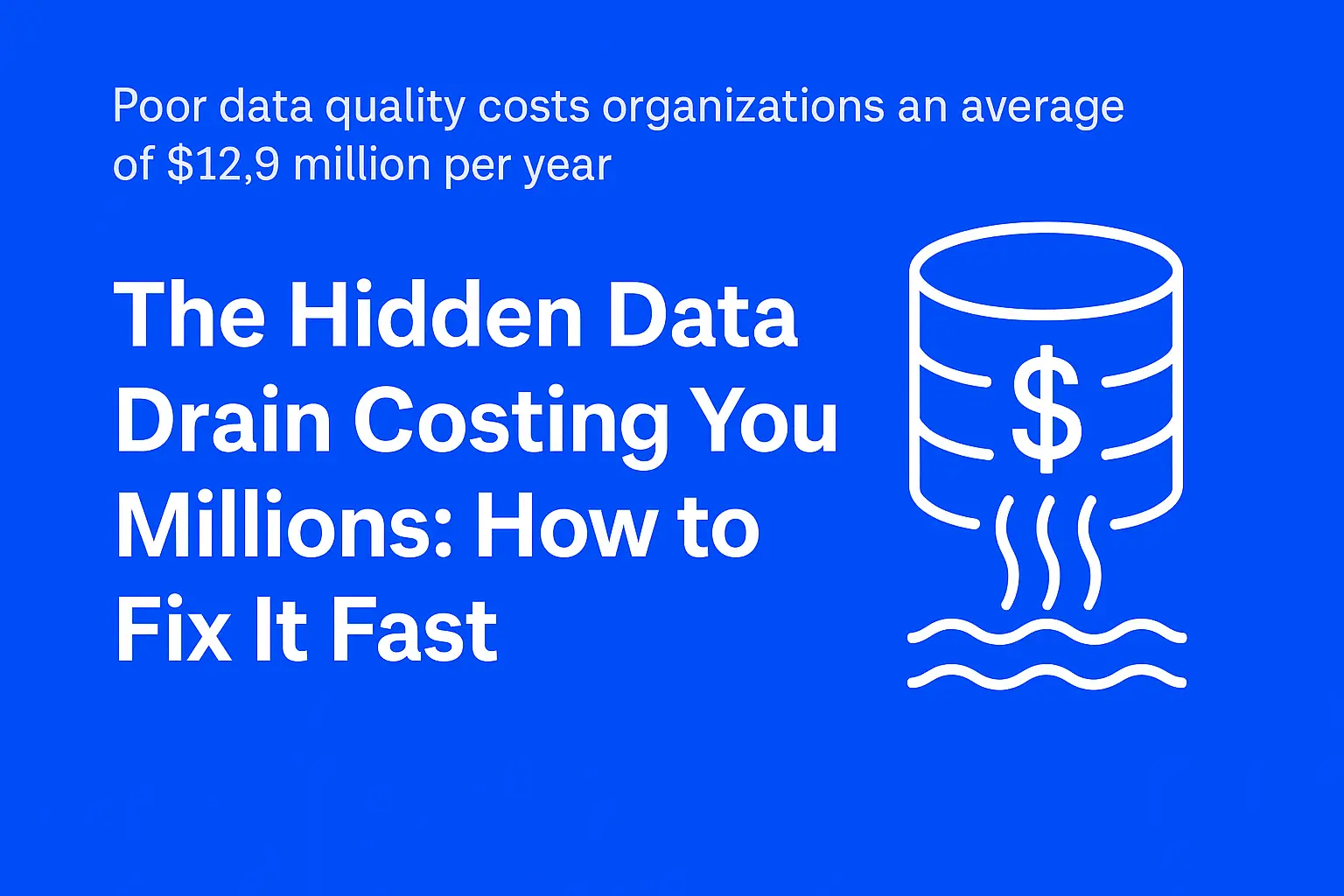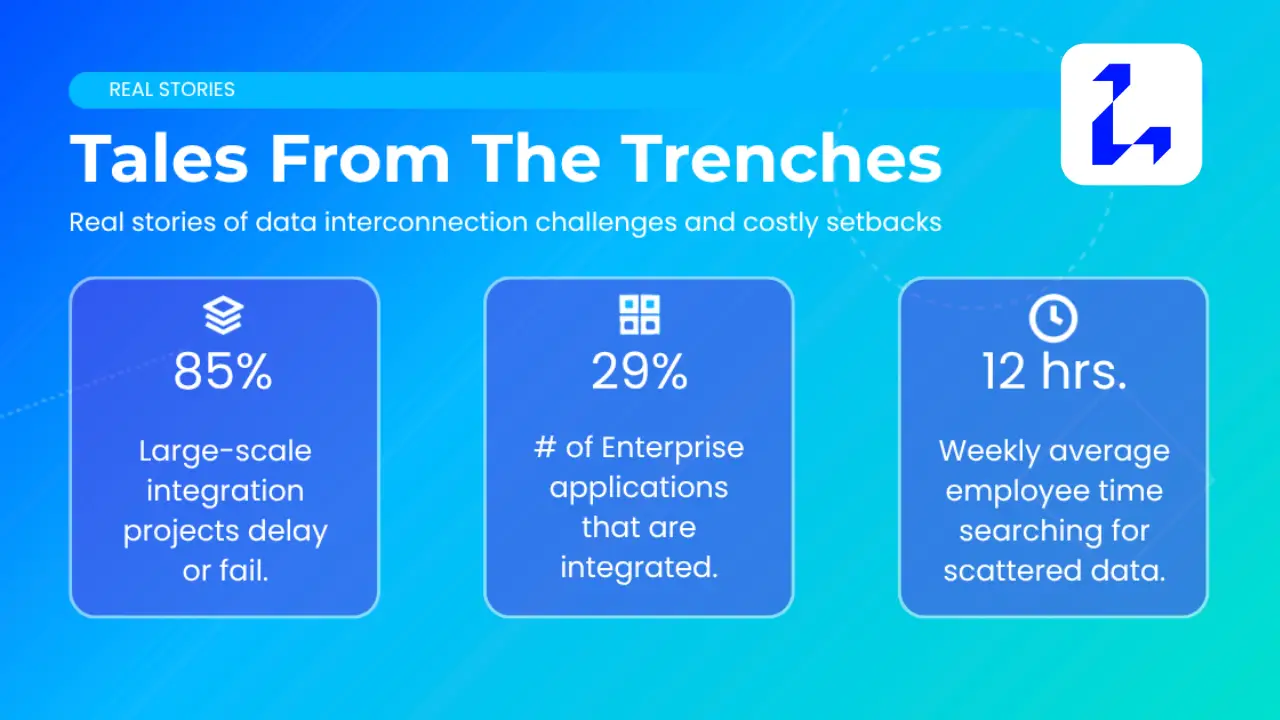Here’s a wake-up call: According to Gartner…
Poor data quality costs organizations an average of $12.9 million per year.
That number isn’t just about wasted spend—it reflects lost opportunities, broken trust, and delayed decisions at the highest levels of your company.
And yet, most executives aren’t even tracking it.
Data Waste: The Unseen Risk in Your Strategic Plans
Imagine approving a major initiative—a market expansion, a pricing shift, a product pivot—based on KPIs that look solid. But buried in those metrics? Incomplete records, misaligned definitions, or outdated inputs that subtly distort reality.
Bad data isn’t just an IT issue. It’s a business risk multiplier.
CFOs are making forecasts with flawed baselines. COOs are optimizing processes with inaccurate throughput data. CMOs are personalizing campaigns on incorrect customer segments. And CIOs? They’re firefighting system inefficiencies that shouldn’t exist in the first place.
Why This Happens: Silos, Speed, and Shiny Objects
In the race to modernize—AI, cloud migration, automation—organizations often skip over the less glamorous work of foundational data integrity. As a result:
- Business units operate on different definitions of the same metric
- Data is spread across disconnected platforms with no central accountability
- Reports are patched together with manual fixes, prone to errors
Worse, most leaders only realize the impact after something breaks: a failed audit, a missed quarter, a reputational crisis.
Fix the Foundation First: Three Moves You Can Make This Quarter
You don’t need a massive overhaul to start seeing value. Here are three strategic actions executives can drive immediately:
- Mandate a data owner for every core business metric.
If no one owns it, no one improves it. Assign business-side accountability for metrics like customer churn, revenue per unit, or order accuracy. - Create a “Data Debt” dashboard.
Visibility drives action. Start tracking the cost of rework, delays, and decision reversals tied to data issues. Make it visible at the executive level. - Align your AI investments with data quality goals.
AI is only as good as the data it feeds on. Before scaling LLMs or predictive models, tie funding to improvements in data accuracy, completeness, and lineage.
Strategic Payoff: Faster, Smarter, Safer Decisions
When data is trusted, decisions accelerate. Alignment improves. Operational risk drops. Your AI investments deliver real ROI—not just demos.
Data quality is no longer a back-office concern—it’s a boardroom imperative.
Let’s hear from you.
What’s the most surprising business impact you’ve seen from bad data? Drop a comment below—or share how your organization is tackling this hidden cost.






